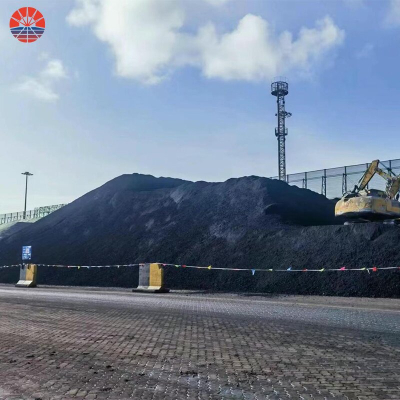Usage Of Petroleum Coke
Petroleum coke (petcoke) has various industrial and commercial applications due to its high carbon content and energy value. Some of the common uses of petroleum coke include:
Fuel in Power Generation: Petcoke is used as a fuel source in some power plants, either on its own or in combination with coal or natural gas. Its high calorific value makes it an efficient fuel for generating electricity.
Cement Manufacturing: Petcoke is used as a source of carbon and energy in cement kilns. It provides high heat during the clinker production process, reducing energy costs in cement manufacturing.
Steel Production: In the steel industry, petcoke is used as a carbon source in blast furnaces during the iron-making process. It serves as a reducing agent, converting iron ore to molten iron.
Aluminum Smelting: Petcoke is utilized in the production of carbon anodes, which are critical components in the aluminum electrolysis process. Carbon anodes conduct electrical current during aluminum smelting.
Brick and Glass Manufacturing: Petcoke can be used as a fuel source in brick and glass kilns, providing high heat for the firing process.
Refractory Industry: Petcoke is used in the manufacture of refractory materials used in high-temperature applications, such as furnaces and kilns.
Fuel for Industrial Boilers: Some industrial facilities, such as pulp and paper mills and chemical plants, use petcoke as a fuel source in their boilers for steam generation.
Carbon Electrodes: Petcoke is sometimes used in the production of carbon electrodes, which find applications in industries like ferroalloys, silicon metal, and calcium carbide.
Anode Paste Production: Petcoke is used in the production of anode paste, which is mixed with other materials to make carbon anodes used in the aluminum smelting process.
It's essential to note that while petcoke has various industrial applications, its usage can have environmental and health implications. The combustion of petcoke can lead to emissions of greenhouse gases and air pollutants such as sulfur dioxide (SO2) and nitrogen oxides (NOx). As a result, there are growing concerns and increasing regulations regarding the use of petcoke in some regions. Efforts are underway to explore cleaner and more sustainable alternatives to reduce the environmental impact associated with petcoke usage.
Petroleum coke production process
Petroleum coke, or petcoke, is a byproduct of the oil refining process. It is a carbon-rich solid material with high carbon content and low ash content. The production process of petcoke involves the following main steps:
Crude Oil Refining: The process starts with the refining of crude oil in an oil refinery. Crude oil is a mixture of various hydrocarbons and impurities. During refining, crude oil is separated into different fractions based on their boiling points through a process called fractional distillation. One of the fractions obtained during this process is called "residue" or "bottom-of-the-barrel," which is the heaviest and has the highest boiling point.
Delayed Coking: The residue obtained from crude oil refining is further processed in a specialized unit known as a coker. The coking process is called "delayed coking" because it involves the controlled thermal decomposition or "cracking" of the high-boiling hydrocarbons in the residue. The coker unit operates at very high temperatures (typically around 900 to 950 degrees Celsius or 1652 to 1742 degrees Fahrenheit) and low pressures to induce the thermal cracking.
Drum Coking: In the delayed coking process, the residue is heated in large drums known as coking drums. These drums operate in a batch-wise manner, and the residue is heated for several hours to induce thermal cracking. The thermal cracking breaks down the heavy hydrocarbons into lighter fractions, including gases, naphtha, diesel, and petroleum coke.
Petroleum Coke Formation: During the delayed coking process, the carbon-rich solid material that remains after thermal cracking is petroleum coke. The coke forms as a solid residue in the coking drums. The yield and properties of petcoke depend on the composition of the original crude oil and the specific operating conditions of the coker unit.
Coke Handling and Storage: Once the coking process is complete, the petroleum coke is removed from the coking drums and transported to storage facilities. It is typically stored in large open or covered stockpiles.
Petroleum coke has various industrial applications, as mentioned in previous answers, including as a fuel in power plants, a carbon source in steel manufacturing, and as a raw material for carbon anodes in the aluminum industry. However, its usage is subject to environmental regulations due to its high carbon intensity and potential impacts on air quality and climate change.










